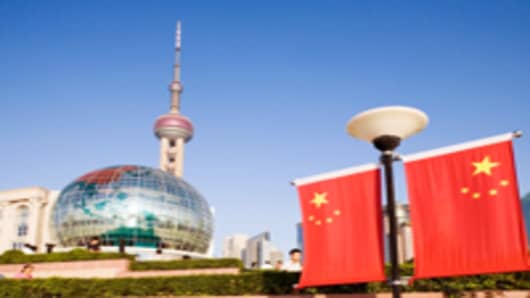Despite the gloomy predictions in the West, China’s economy has been recovering since the government’s monetary loosening in fall 2011. But there is no room for complacency.
Last Thursday, the People's Bank of China lowered the benchmark deposit rates by 25 basis points and cut lending rates by 31 basis points; the second time in a month. The cuts fueled concerns that there is more trouble ahead for the Chinese economy.
In April, the Chinese economic data fell short of market expectations. As a result, some investors became concerned that China would repeat the hard landing of 2008.
In May, economic data was still weak, and the crisis in the euro zoneentered a more dangerous phase.
In the West, China is seen amid a worsening slowdown. Economists do not see a return to the kind of massive RMB 4 trillion (US$630 billion) stimulus package launched in fall 2008. Yet, signs abound that the government is employing a “stimulus lite” policy.
What we may be witnessing is a bottoming out.
Expect policy impact in H2 of 2012
The stimulus lite initiatives were initiated in February, but the soft data in April accelerated measures in several fronts.
• The National Development and Reform Commission has accelerated the approval process for major infrastructure projects, including new airports and subway networks.
• The central bank of China cut the reserve requirement ratio by 50 basis points; it is likely to be cut twice before the year-end, starting soon.
• New tax cuts are to be expected as well.
• As interest rate liberalization proceeds, a new rate cut cannot be excluded, if global prospects deteriorate significantly.
• Fiscal policies are now more proactive. The State Council has announced a RMB 36.3 billion (US$5.7 billion) subsidy program to encourage the consumption of energy-efficient household electronic appliances, automobiles, and power generators.
• The Ministry of Railways obtained large credit lines from banks in 2011, which will allow it to execute a planned investment of RMB 400 billion ($63 billion).
• The Chongquing municipal government has signed multiple contracts with 30 major State-owned enterprises, which are expected to invest over RMB 350 billion ($55 billion) in Chongqing in the next few years. This deal provides a blueprint for similar SOE-local government initiatives in the coming months.
No Room for Complacency
Change is in the air, even if the markets have missed some of the signs.
Real GDP growth in China could rebound in the second half of the year, at about 8-8.4 percent year-on-year. Some key data remains soft, but there are signs of recovery in housing markets, exports, and lending.
Industrial production is picking up and a series of financial reforms are being introduced.
At the turn of 2008/9, the world economy was still suffering from a severe downturn. When Premier Wen Jiabao said that China could achieve 8.5 percent growth in 2009, few observers in the West took his view seriously. And yet, the Chinese economy was rebounding.
Again, when Wen visited Wuhan in May, he said that the government was making stable economic growth an important priority. In the past quarter, the government’s focus has moved from fighting inflation to stabilizing growth.
However, there is nothing automatic about the rebound. It could erode, if further policy loosening is inadequate or too slow. Worldwide downside risks remain significant as the debt crises in the euro zone and the U.S. are likely to deteriorate in the coming months. In China, monetary easing should solidify the rebound.
Inflation fell more sharply than markets expected in June. The “stimulus lite” is likely to support the rebound of inflation and property prices by the year-end. In that case, the window of policy loosening may prove relatively brief.
There is no room for complacency in the second half of 2012 and the beginning of 2013. China’s economy has strong long-term growth potential. But the euro zone and even the US are moving toward a dangerous winter chill.
_________________________ Dan Steinbock is research director of International Business at India China and America Institute (USA), visiting fellow at Shanghai Institutes for International Studies (China) and in the EU-Center (Singapore).


